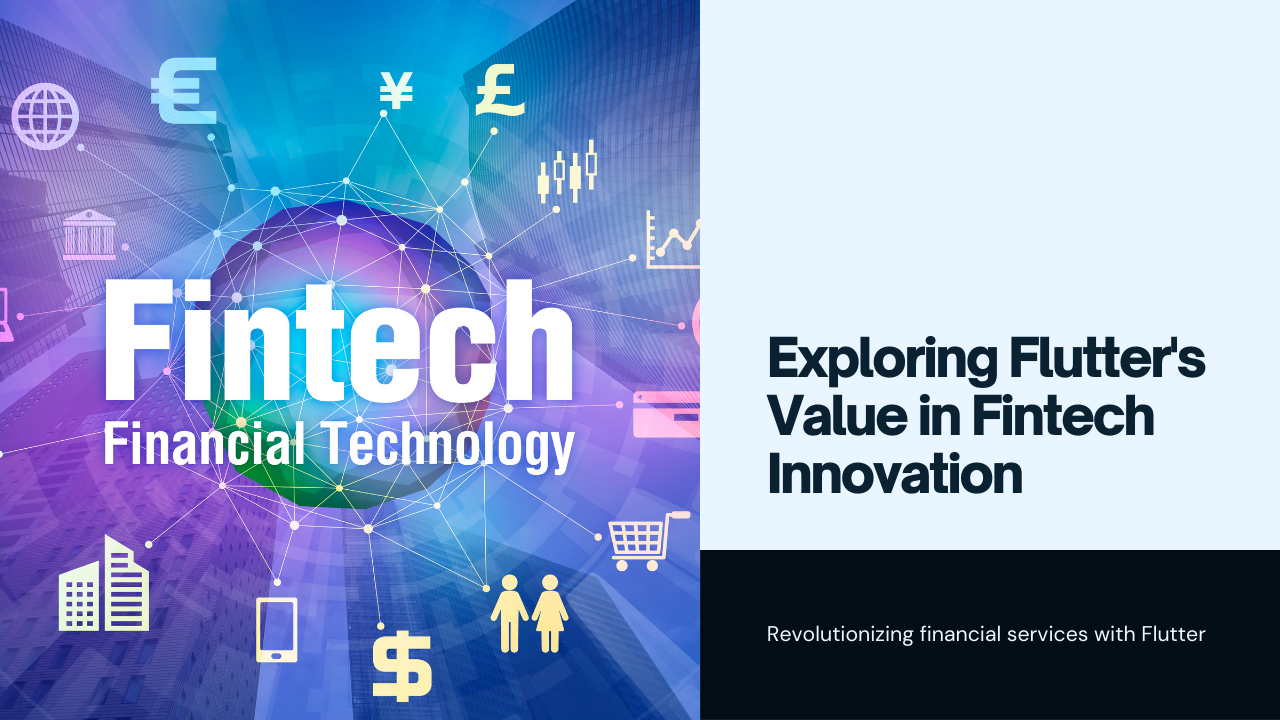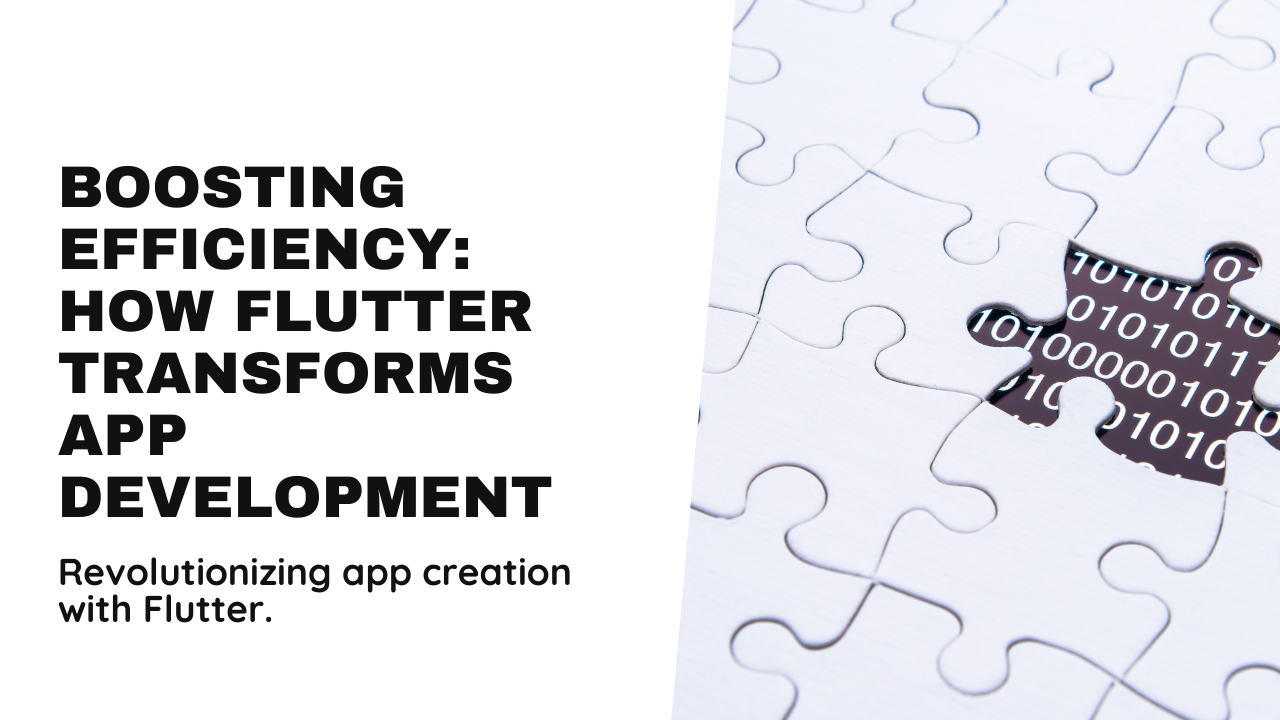In the rapidly evolving world of financial technology (Fintech), the demand for innovative and efficient solutions is growing. As financial services continue to transform, technology plays a crucial role in shaping user experiences and operational efficiency. Flutter, Google’s open-source UI toolkit, has emerged as a powerful tool for developing cross-platform applications. This blog explores how Flutter is influencing the Fintech industry, its advantages for financial applications, and future prospects.
Why Flutter is a Game-Changer for Fintech
Cross-Platform Efficiency
Flutter’s primary strength is its ability to develop applications for both iOS and Android from a single codebase. This cross-platform capability is particularly beneficial for Fintech companies, which need to deliver consistent and high-quality experiences across different devices. By reducing the need to write separate code for each platform, Flutter streamlines development processes, accelerates time-to-market, and minimizes costs.
High Performance and Speed
Performance is critical in Fintech applications, where real-time transactions and data processing are essential. Flutter’s architecture, which compiles code to native machine code, ensures high performance and responsiveness. Its rendering engine, Skia, allows for smooth animations and fast interactions, making it suitable for complex financial applications that require quick and reliable performance.
Key Benefits of Flutter for Fintech Applications
Rich and Customizable UI
In Fintech, user experience (UX) is paramount. Flutter’s extensive library of widgets and customizable UI components allows developers to create sophisticated and visually appealing interfaces. Financial applications can benefit from Flutter’s ability to deliver rich and interactive designs, enabling users to navigate through features seamlessly. Customizable elements also help in creating unique and brand-aligned interfaces that stand out in a competitive market.
Rapid Development and Hot Reload
Flutter’s hot reload feature is a game-changer for development efficiency. It allows developers to see changes in real-time without restarting the application. This capability is particularly useful for Fintech applications, where frequent updates and feature iterations are common. Rapid development and testing help in quickly addressing bugs, improving features, and ensuring a smooth user experience.
Integration with Native Features
Fintech applications often require integration with native device features such as biometric authentication, GPS, and payment gateways. Flutter’s platform channels enable seamless communication between Dart code and native code, facilitating the integration of these critical features. This flexibility ensures that financial applications can leverage device-specific functionalities while maintaining a unified codebase.
Use Cases of Flutter in Fintech
Mobile Banking Apps
Mobile banking applications benefit significantly from Flutter’s cross-platform capabilities. Banks and financial institutions can develop apps that offer a consistent experience across both iOS and Android devices. Flutter’s high performance ensures smooth transactions, real-time updates, and responsive user interfaces, enhancing the overall banking experience for users.
Investment and Trading Platforms
Investment and trading platforms require real-time data processing, complex charting, and interactive features. Flutter’s performance and flexibility make it an ideal choice for developing these applications. With Flutter, developers can create visually engaging interfaces that display real-time market data, integrate advanced charting libraries, and provide a responsive trading experience.
Financial Management Tools
Financial management tools, such as budgeting apps and expense trackers, can leverage Flutter’s rich UI components and performance benefits. These applications often need to handle various financial data inputs, provide interactive visualizations, and offer user-friendly interfaces. Flutter’s capabilities support the development of robust and aesthetically pleasing financial management tools that cater to diverse user needs.
Integration of Third-Party Services
Payment Gateways
Integrating payment gateways is a critical aspect of Fintech applications. Flutter’s compatibility with various payment gateway plugins and APIs simplifies the integration process. Whether processing credit card payments, digital wallets, or cryptocurrencies, Flutter enables seamless integration with third-party payment services, ensuring secure and efficient transactions.
Data Security
Data security is a top priority in Fintech applications. Flutter supports various encryption and security practices to protect sensitive financial data. By utilizing platform channels, developers can implement native security features and ensure compliance with industry standards. Flutter’s architecture also allows for the integration of secure authentication methods, such as biometric verification and multi-factor authentication.
Challenges and Considerations
Performance Optimization
While Flutter offers high performance, optimizing applications for Fintech requires careful attention to detail. Complex financial calculations, real-time data processing, and high user interaction demand efficient coding practices and performance profiling. Developers must continuously monitor and optimize their applications to ensure they meet performance standards and provide a seamless user experience.
Regulatory Compliance
Fintech applications are subject to stringent regulatory requirements. Ensuring compliance with financial regulations, data protection laws, and security standards is essential. Developers must stay informed about relevant regulations and implement necessary measures within Flutter applications to meet compliance requirements and protect user data.
Integration with Legacy Systems
Many financial institutions use legacy systems that need to be integrated with modern applications. While Flutter provides tools for integration, connecting with existing backend systems and databases may require additional effort. Developers must ensure that Flutter applications can effectively communicate with legacy systems while maintaining performance and data integrity.
Future Prospects for Flutter in Fintech
Evolving Ecosystem
Flutter’s ecosystem continues to grow, with new plugins, libraries, and community contributions enhancing its capabilities. As Flutter evolves, its support for Fintech applications is likely to expand, including more features for data visualization, security, and integration with financial services. Staying updated with Flutter’s advancements will be crucial for leveraging its full potential in the Fintech sector.
Enhanced Performance Features
Future updates to Flutter may include enhanced performance features tailored for Fintech applications. Improvements in rendering, data processing, and platform-specific optimizations will further support the development of high-performance financial applications. Developers should keep an eye on Flutter’s roadmap and incorporate new features to stay ahead in the Fintech market.
Increased Adoption
As Flutter gains popularity, more Fintech companies are likely to adopt it for their application development needs. The framework’s cross-platform capabilities, rich UI options, and performance benefits make it an attractive choice for financial institutions and fintech startups. Increased adoption will drive further innovation and refinement in Flutter’s tools and features, benefiting the entire Fintech ecosystem.
Conclusion
Flutter is making a significant impact in the Fintech industry by providing a powerful, cross-platform framework that enhances development efficiency, performance, and user experience. Its rich UI capabilities, rapid development features, and seamless integration with native functionalities position it as a valuable tool for creating innovative financial applications. While challenges such as performance optimization and regulatory compliance exist, Flutter’s growing ecosystem and future prospects indicate a promising future for its role in Fintech. Embracing Flutter for Fintech development offers the potential for creating cutting-edge, high-performance financial applications that meet the evolving needs of users and industry standards.







